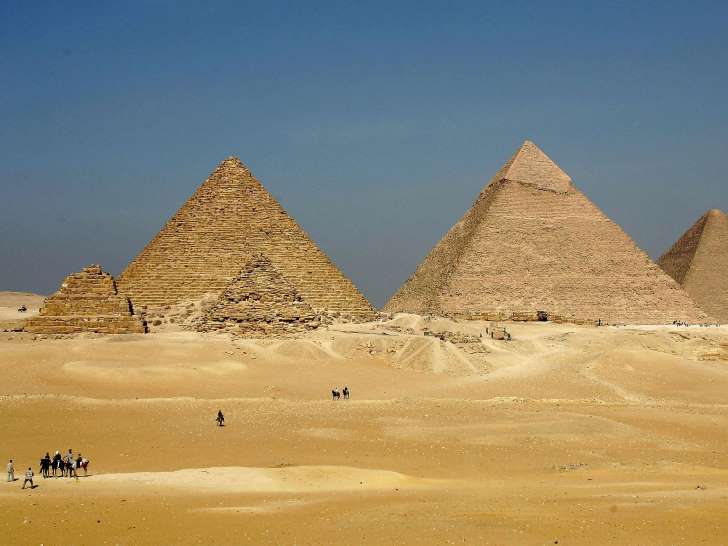Archaeologists believe they have solved one of history’s most puzzling questions — how the ancient Egyptians transported over 170,000 tons of limestone to build the Great Pyramid at Giza.
New findings at the site on the outskirts of Cairo have revealed purpose-built boats were used to transport the huge stones.
The findings shed new light on how King Khufu’s tomb, built over 4,000 years ago in about 2550 B.C., was built Archaeologists have long known that some rock had been extracted eight miles from Giza in a place called Tura, while granite was quarried from over 500 miles away.
The way in which these materials were transported, however, has long been a source of disagreement among academics.
A group of archaeologists working at the Giza pyramid complex, an archaeological site, have unearthed an ancient papyrus scroll, remains of a boat and a network of waterways at the site of the pyramid, providing new evidence that points to how the oldest of the Seven Wonders of the Ancient World was built.
Pierre Tale, who spent four years painstakingly deciphering the papyrus written by an overseer working on the pyramid’s construction, said in the new documentary Egypt’s Great Pyramid: The New Evidence: “Since the very day of the discovery it was quite evident that we have the oldest papyrus ever found in the world.”
The document was apparently written by a man called Merer who was in charge of 40 elite sailors. Archaeologists discovered that thousands of trained workers used boats to navigate canals dug along the River Nile for the purposes of transporting limestone.
The boats were held together by thick, twisted ropes, some of which have survived and were found in good condition.
After collecting the materials, workers would bring them to an inland port a few meters from the base of the pyramid. In total, some 2.3 million blocks of stone were shipped across the land over the course of two decades.
American archaeologist Mark Lehner, who has over 30 years experience excavating in Egypt, said: “We’ve outlined the central canal basin, which we think was the primary delivery area to the foot of the Giza Plateau.”
Source: The Independent












